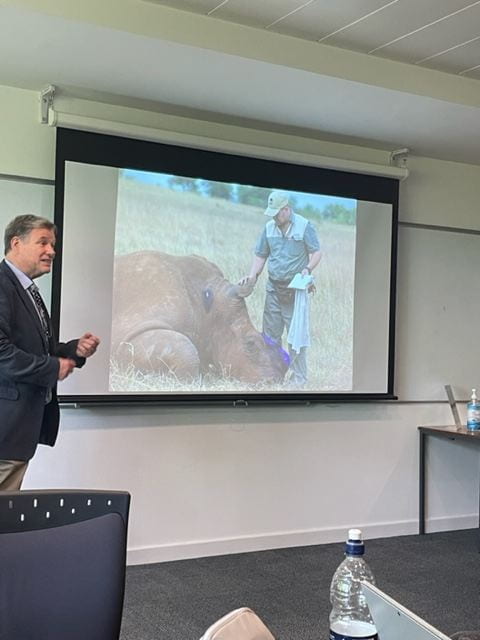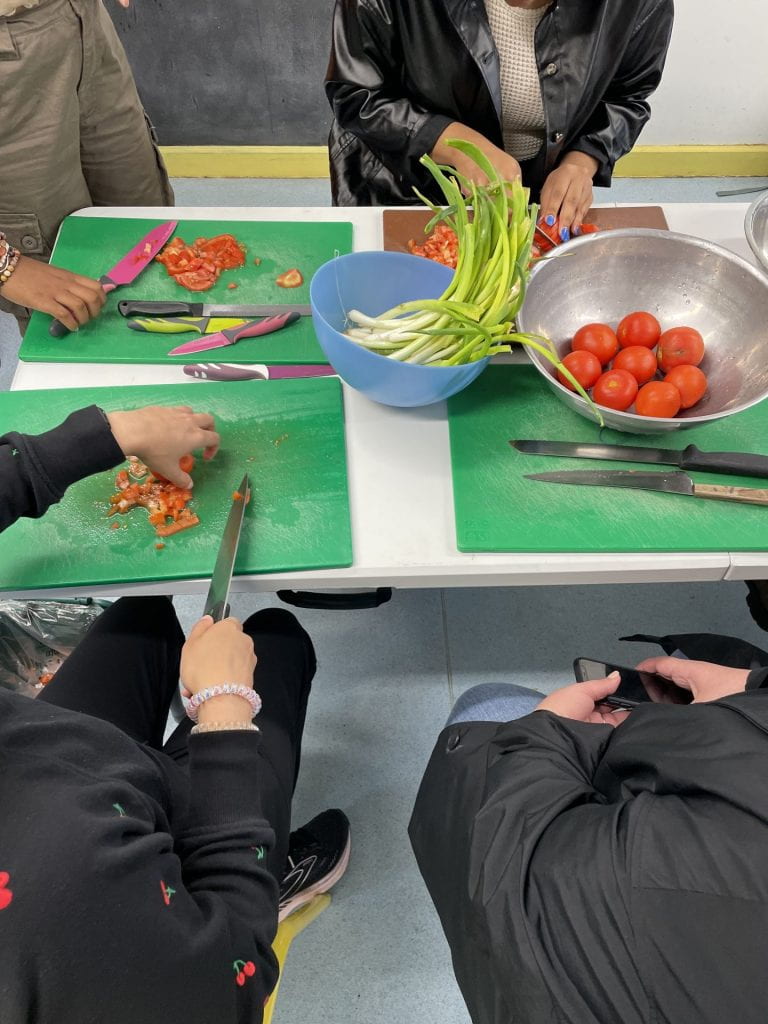Today was our last full day in Aberstwyth. The day’s activities included two lectures, a built assessment of a local residential section, and visiting a local not-for-profit (or charity) organization, Aber Food Surplus, a food sharing hub.
The first presentation was given by Professor Paul Brewer. As a Fluvial Geomorphologist, Professor Brewer shared about his extensive work studying river changes and environmental influences on water-systems throughout the world. His presentation was entitled, “From Azancollar (Spain) to Zlatna (Romania), a European Tour of metal mining impacted river systems”. The lecture was illuminating on the environmental effects of historical metal mining and the spread of heavy metal contamination over time due floods. Lead (Pb), Cadmium (Cd), Arsenic (As) and Zinc (Zn) contamination along with the contamination of agricultural byproducts introduces a host of issues. These issues often are cyclical in nature due to the historical layers of contamination that have been deposited over time. The heavy metal contamination of the soil, livestock, and water can eventually lead to human consumption. Dr. Brewer delineated about the ramifications of climate change and increased rainfall being a key conduit for the proliferation of soil contaminations. The heavy rain events or flash floods are highly effective dispersal opportunities for contaminants to spread. This leads to sedimentation on local plant life and even being rooted under the soil over time as layer after layer of sediment settles. A detailed understanding is required to attack soil contamination and mitigate its damaging impact on the environment. The implementation of a geomorphological approach according to Dr. Brewer is an effective measure to identify and map contaminated locations so that they may be effectively managed.
The second presentation given was by Dr. Darrell Abernethy. As a veterinarian-science researcher, Dr. Abernethy has spent his career exploring the relationship between animal health and human health. He explained that the relationship between the two are integrated and overlap at various sectors. He provided the example of zoonotic diseases and the public health concerns associated with diseases that begin with initial infections among animals and then makes the jump to infecting humans. An example of this includes Ebola, which has been suggested to begin with infected fruit bats. He also drew the connection between human and animal health in talking about the conservation efforts in Kruger National Park in Africa. Kruger National Park is primarily concerned with preventing poaching of the White and Black Rhino populations. As Dr. Abernethy explained, to address the decline in Rhino population also means to address the poor quality of life among tribes and their communities surrounding the Rhino’s habitats. A major issue identified was the influence of poachers providing the communities with financial support in exchange for their compliance. Rhino horns can be extremely valuable commodities to these communities. So to really conserve the Rhino population, you must first address the extreme poverty of the communities living near the preserve.

Following our group lunch at the campus dining hall, we reconnected with Ellie (our Aber Uni guide) to make our way down the hill to conduct our built environment assessment and visit with Aber Food Surplus. We were able to identify that a majority of the homes in the area were townhouses, many with clear sidewalks and well-maintained front porches. The storm drains were much more adequate in Aber and London than Birmingham. Similar to London, the curb cuts were clear and present around the block in Abers residential areas. The variation in sidewalk style was fair overall with almost no litter in the neighborhood. The same could be said for the London assessment done.
The last activity of the day was spent visiting with the Aber Food Surplus where we were greeted by Heather, a founding member. As a not-for-profit organization, Aber Food Surplus works to tackle food waste and promote positive community change through nutrition-centered advocacy and programs. Through their partnerships with local businesses and establishments, they collect food throughout the town and redistribute throughout the community, aiming to alleviate the amount of food waste produced and breaking down barriers to nutrition. They also help to advance health equity by providing those in need with access to healthier foods, while also helping to improve individual’s self-efficacy with identifying and selecting healthier food behaviors. There are over 70 volunteers that make up their team. There is no clear number of people they serve individually because of the vast number of charities they support, but Heather estimates they serve around 250 community members per week. Aber Food Surplus also has a food composting and community garden project. Our afternoon plans was to go to these community gardens to plant some seeds, however this was thwarted by the rainy weather. So instead, we assisted Heather in preparing salsa using locally derived ingredients. So as we were learning about the organization and their mission, we also learned to make salsa! A handful of us (Rachauna, Yesi, Cassidy, Mya, Maya, Ritika) prepped, washed, and chopped up some tomatoes, green onions, and cilantro (coriander as they call it). Prior to storing the remaining goods, we learned that the salsa would keep longer if it were cooked. Heather explained that this helps them to maintain food for a few extra days so that they can distribute it to more community members. Once the ingredients were cooked and seasoned, we all shared in taste testing our hard work on a slice of toast. It was a great experience and we learned so much about the great work occurring in the Aberystwyth community. To learn more about their ongoing projects and work, you can visit their website (www.aberfoodsurplus.co.uk).



